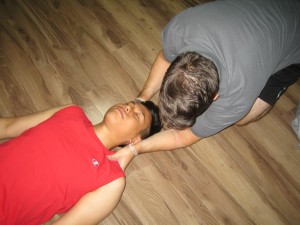Fact Checked
Overview Of A Head Trauma
- Head trauma is a wound that distresses the skull and/or the brain
- Injuries sustained to the head can be minor or very severe
- Injuries to the head can be classified as either ‘closed’ or ‘penetrating’
- ‘Closed’ injuries – when the head smashes against a blunt item
- Closed injuries often result in a concussion
- ‘Penetrating’ injuries – an item infiltrates the skull and goes through the brain
Causes Of Head Traumas
- Accidents that occur on the road
- Work-related accidents
- Injuries that occur due to an assault
- Head traumas from falling
Head trauma is a wound that distresses the skull and/or the brain - Sport-related injuries
Symptoms Of Head Traumas
- Losing consciousness
- Blood loss
- Queasiness
- Nose starts running or a discharge of fluid
- Hearing problems, blurry vision, taste, smell
- Problems related to speech
- Heart rate appears to be irregular
- Convulsions
- Casualty can become paralyzed
- Head traumas can result in a coma
- Personality can start to change
- Psychological issues can start to emerge
Treatment For A Head Trauma
For slight head traumas:
- Place ice on the affected area to reduce inflammation
- The extent of the accident is not associated to the severity of the injury
- Check the casualty cautiously for bleeding
For moderate to serious head injuries:
- Look to see if the casualty’s breathing pattern is consistent
- Start CPR if you notice the casualty is not breathing
- If there are signs of blood loss, compress the area with a fresh cloth
- If the cloth becomes drenched in blood, place a new cloth over the initial one
- Do not get rid of fragments from the wound
- If the casualty is throwing up, turn them on their side
- To reduce the chances of spinal injury – hold the casualty’s head, neck and body in a straight line
- Keep the casualty in one position
- If the casualty is unconscious, treat it as if it were a spinal cord injury
- Position the head in alliance with the spine
- Acquire medical assistance right away.
Phone Your GP If:
- Blood loss
- Fluid discharge from the ears, mouth, nose
- Biliousness
- Loss of awareness
- Confusion / Anxiety / Irritability
- Indistinct speech / Seizure
- Foggy vision
- Fracture / Stiff neck
- Failure to move the limbs
Related Video On Head Traumas

